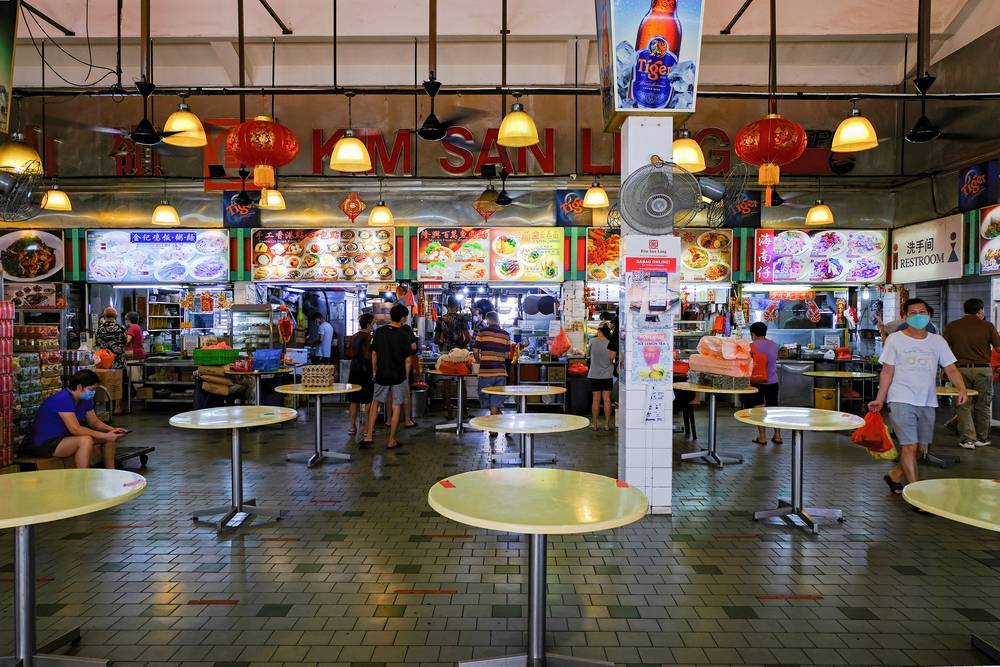The tragic death of Hoon Thing Leong, affectionately known as the “coffee shop king” and founder of Singapore’s Kim San Leng coffee shop chain, draws attention to the potential complications associated with liver biopsies, especially in patients with pre-existing medical conditions.
Hoon died due to a massive haemorrhage following a liver biopsy, a risk that was escalated by his advanced lymphoma condition.
A Sudden and Devastating Turn of Events
Despite having a significant medical history, including hyperlipidaemia, hypertension, ischaemic heart disease, and a pacemaker inserted in September 2020, Hoon continued to show remarkable vitality. His sudden demise has sparked a conversation about the importance of understanding potential risks associated with medical procedures, particularly for those with compromised health.
In April 2021, feeling more fatigued than usual, Hoon sought treatment at Singapore General Hospital. Initial results from a CT scan indicated possible liver cirrhosis, a condition characterised by liver scarring, and multiple lesions on his liver. In spite of the elevated risks associated with a liver biopsy due to his low blood count, Hoon elected to undergo the procedure to determine the cause of his persistent fever and to investigate the presence of underlying cancer.
The Silent Perils of Liver Biopsy
While the biopsy was performed competently, Hoon’s condition deteriorated rapidly afterwards. Initially, doctors suspected sepsis as he displayed borderline blood pressure. His symptoms escalated to breathlessness, drowsiness and eventually a pulseless electrical activity collapse. Despite extensive efforts to stabilise him, Hoon eventually succumbed to a massive haemorrhage.
An autopsy revealed an extensive amount of blood and blood clots in Hoon’s peritoneal cavity. The peritoneal cavity houses the stomach, liver, and intestines. This devastating outcome is a known complication of percutaneous liver biopsies, particularly in patients with pre-existing conditions like lymphoma that can increase bleeding likelihood.
The Procedure: Liver Biopsy and its Associated Risks
A liver biopsy is a medical procedure that involves taking a small sample of liver tissue for examination under a microscope to diagnose disease or evaluate the extent of damage. It’s typically done using a thin needle inserted through the skin and into the liver. It is guided by imaging such as an ultrasound or CT scan.
This procedure, while beneficial for diagnostic purposes, is not without risks. Common risks include pain, infection, and bleeding. The latter is a particular concern as the liver is a highly vascular organ. More severe complications, although rare, include a punctured lung or gallbladder, and internal bleeding which can sometimes require surgical intervention.
The risk of complications increases for patients with pre-existing conditions such as a low blood count or a clotting disorder. Those suffering from advanced conditions like lymphoma, similar to Hoon’s case, are at a higher risk of bleeding. As such, doctors usually conduct a thorough assessment of the patient’s overall health status before deciding to proceed with a liver biopsy, weighing the potential benefits of obtaining a definitive diagnosis against the possible risks.
Making Sense of a Medical Misadventure
The coroner, State Coroner Adam Nakhoda, ultimately ruled Hoon’s death as a medical misadventure. He reiterated that the biopsy was executed appropriately but, unfortunately, a known complication of the procedure occurred.
In this case, the tragedy underlines the inherent risks associated with invasive procedures. This is even when performed correctly and with the utmost care. It is crucial for patients and their families to be well-informed about potential risks and complications. It is especially important in cases involving pre-existing conditions or compromised health.
Honouring a Legacy
Hoon’s legacy, the Kim San Leng chain of coffee shops, continues to thrive across Singapore. His tenacious spirit and continuous drive for self-improvement remain an inspiration for many.
Hoon’s unfortunate passing serves as a reminder of the silent threat posed by complications from medical procedures like liver biopsies. It’s a wake-up call for increased awareness, thorough patient counselling, and further research to minimise such risks. The medical community in Asia and beyond needs to take this opportunity to renew its commitment to patient safety and quality of care.

